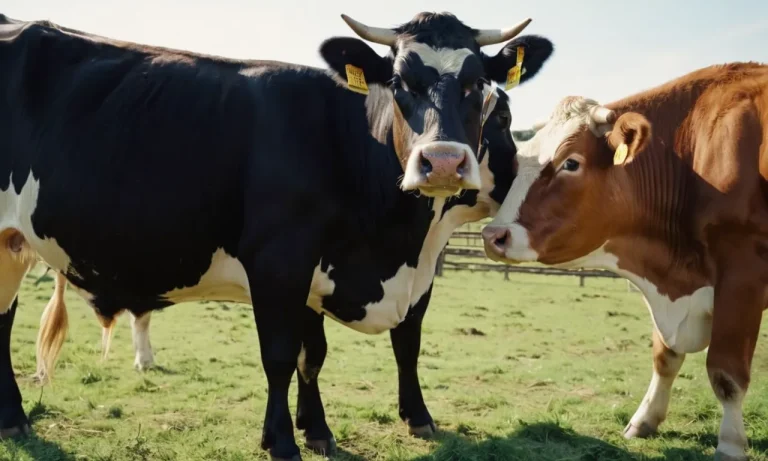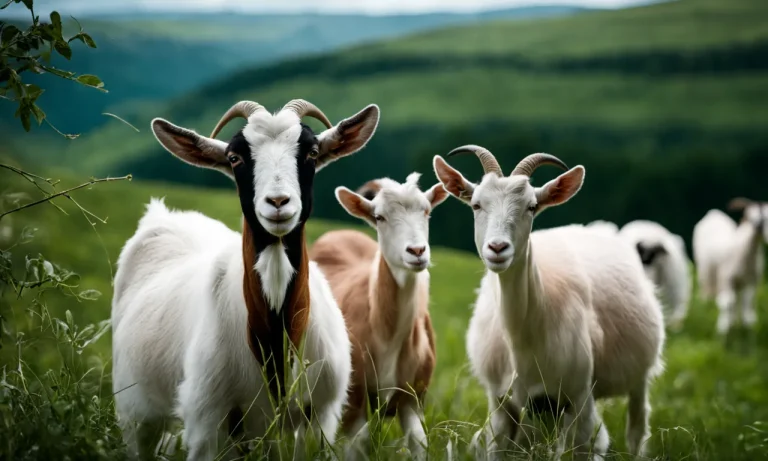Geese are iconic birds that can be found across North America, recognizable by their large size, long necks, distinctive honking calls, and annual migrations. As the spring nesting season approaches each year, one common question arises: do male geese sit on eggs like their female counterparts do?
If you’re short on time, here’s a quick answer: typically, no. Female geese, called geese, are the ones that incubate eggs and sit on the nest while males, called ganders, stand guard and defend the nesting area.
The Basics of Goose Nesting
When Do Geese Nest and Lay Eggs?
Geese start looking for nesting sites in early spring, typically February or March. The exact timing depends on the species and location, as geese nest when weather conditions become mild enough for them to survive incubation.
Canada geese, the most widespread goose species, begin laying their eggs in late March or April in most of the U.S. They will build their nest about 1-2 weeks before the first egg is laid.
The nesting season reaches its peak from April through June. Some geese species, like snow geese, lay their eggs as late as July. Goose eggs take about 28-30 days to hatch, so goslings start appearing in late April/May through July.
The earlier in spring the eggs are laid, the sooner the goslings will hatch and be able to fully develop before winter returns.
Where Do Geese Build Their Nests?
Geese nest on the ground near water, seeking sites with concealment from predators and access to food. Most species nest in uplands within a few hundred meters of lakes, ponds, marshes, or other wetlands. Canada geese often build nests near riverbanks, islands, or human-made structures like dams.
Snow geese nest in wetland areas of the Arctic tundra. Domestic geese will nest wherever their owners provide shelter and nesting materials.
Nest locations can be quite variable between goose pairs, even within the same wetland area. Some prefer nesting in marshy wetlands with tall vegetation, while others nest on higher ground in open fields close to water.
Geese return to the same nesting area year after year and often build the new nest within a few hundred meters of the previous one.
How Many Eggs Do Geese Lay?
The typical clutch size for most goose species ranges from 3-8 eggs. Larger goose species, like the Canada goose, usually lay 4-7 eggs. Smaller species like the cackling goose lay fewer, with a typical clutch of 3-5 eggs.
Here are some details on clutch sizes for common goose species:
- Canada goose: 4-7 eggs
- Snow goose: 3-5 eggs
- Ross’s goose: 3-5 eggs
- Cackling goose: 3-5 eggs
- Egyptian goose: 6-12 eggs
- Barnacle goose: 4-7 eggs
The number of eggs can vary based on the age and health of the female goose. Younger geese and less dominant birds tend to lay fewer eggs per clutch. The availability of food resources also impacts clutch size, as geese lay more eggs when food is plentiful.
The Roles of Male and Female Geese
What Are the Female Goose’s Responsibilities?
The female goose shoulders most of the work when it comes to nesting and raising goslings. Her key duties include:
- Building the nest – The mother goose picks the nesting site, then uses sticks, grass, feathers and down to construct a nest on the ground or elevated location.
- Laying the eggs – A mother goose usually lays between 5-10 eggs per reproductive cycle and sits tightly on them to provide warmth.
- Incubating the eggs – She patiently incubates for 28-30 days while protecting the nest from predators.
- Taking care of goslings – Once hatched, the gosling imprint on their mother and she leads them to water and shows them how to forage for food.
According to the research of CAB Direct, the female dedicates significant time and energy to nesting – she loses approx. 26% of her pre-laying body weight during the entire reproductive process.
What Are the Male Goose’s Responsibilities?
The male goose has less parental investment than the female. His main jobs are:
- Fertilizing eggs – He mates with female geese to fertilize the eggs that will hatch into goslings.
- Standing guard- While the female incubates, the gander will stand guard near the nest to ward off predators.
- Leading during migration – The male often leads the family unit during migration to wintering grounds.
According to scientists from the U.S. Geological Survey, the ratio of male to female parental care in geese species is approximately 1:4 – the female puts in over 4 times more overall work than the male when it comes to raising young.
When Do Males Ever Sit on The Nest?
Generally, male geese do not sit directly on the nest during incubation – doing so could break the fragile shell membranes before hatching. However, there are special cases when the male will take over nesting duties:
- If the female dies or becomes injured/severely weakened.
- If the mother has to take an extended break from the nest e.g. to forage for sustenance.
- In rare cases when same-gender goose pairs nest, the male adopts traditional female duties.
Research from JSTOR shows that male substitutions usually occur for less than 10% of total incubation time. And unsurprisingly perhaps, their hatching success rates tend to be lower than female-incubated nests – often less than 50% in solitary nesters.
Incubation and Hatching
How Long Does Incubation Take?
The incubation period for goose eggs typically lasts between 28-32 days. The exact length can vary slightly depending on the specific breeds of geese, with larger goose breeds tending to have a longer incubation time.
For example, African geese may hatch in 28 days, while Embden geese take closer to 32 days for their goslings to pip and hatch.
Throughout the nearly month-long incubation, it is critical that the eggs are kept at a consistent warm temperature between 99.5-102°F and have high humidity levels. The parent geese (most often just the female) will take turns rolling and rotating the eggs frequently with their bill to ensure even warmth distribution and prevent the embryos from sticking to the inside of the shell.
Towards the end of the incubation period, the goslings will begin pipping – using their egg teeth to start slowly cracking open the shell from the inside. It may take 12-36 hours between the start of pipping and the gosling fully emerging from the broken egg.
Parent geese are very protective of their nest at this vulnerable stage and may hiss or bite intruders.
Newly Hatched Goslings
Newly hatched goslings are covered in soft, yellow down and will weigh approximately 5-7 oz. They are able to stand, walk, swim, and feed themselves shortly after hatching. Unique among poultry, geese are precocial rather than altricial, meaning goslings have more mature features and mobility from birth.
For their first few weeks, goslings rely fully on their parents to keep them warm, safe, well-fed, and to teach them behaviors essential to survival. Parent geese are very protective and may become aggressive towards humans, dogs, or other animals that get too close to their young.
Some key facts and traits of newly hatched goslings include:
- Strong imprinting instincts – they initially identify with the first moving creature they see as their lifelong caregiver
- Soft, high-pitched peeping sounds when communicating distress or trying to locate their parents
- Ability to swim and float well from day 1 due to being covered in fluffy down
- Need to eat small meals frequently to support their rapid growth
- Sensitive to cold and rely on huddling under parents or heat lamp to stay warm
Within their first week, goslings may grow up to 3x their initial hatching size. Their adult feathers will start replacing down around 4-6 weeks old. With an attentive parent goose guiding and protecting them, most domestic goslings will successfully transition to adolescence and reach breeding maturity by the time they are 2-3 years old.
Unique Nesting Variations
Same-Sex Pairings
While most goose pairs are male and female, some interesting exceptions occur. In rare cases, two male or two female geese may bond and nest together. This unusual pairing offers insights into the flexible social structure of geese flocks.
Though less common, same-sex goose pairs demonstrate the ability to cooperatively build nests, take turns incubating eggs, and raising goslings together. Their success as nurturing parents shows that gender roles are not rigidly fixed in the goose world.
Unmated Geese
Not every goose finds a mate before nesting season. Unmated geese may still engage in nesting behaviors like gathering nest materials and defending territory. Without a partner to share responsibilities, solitary geese face greater challenges. They often lay fewer eggs or abandon nests more readily.
Yet, resilient unmated geese may incubate adopted eggs laid by other geese or raise orphaned goslings that need care. Their perseverance reveals the individual determination geese can show even when circumstances are not ideal.
Differences Across Goose Species
While sharing common traits, goose species exhibit their own nesting quirks. Larger Canada Geese aggressively defend larger territories, whereas smaller Cackling Geese nest semi-colonially. Snow Geese build rushed nests during hurried spring migrations, while Barnacle Geese nest on precarious rocky cliffs.
Regardless of species, geese choose nest sites balancing factors like food availability, safety, and ease of access during breeding season. Their specialized nesting strategies showcase the adaptability allowing geese to thrive in diverse habitats worldwide.
Conclusion
While female geese undertake the bulk of actual nest sitting and egg incubation duties, male geese still play a vital role in defending nesting territory and protecting their mate and future offspring.
Understanding typical goose behaviors around nesting sites provides fascinating insight into the reproductive strategies of these common waterfowl.
In rare cases where a female is unable to complete incubation, some evidence suggests her male partner may step in to ensure their eggs hatch. But by and large, female geese can be found patiently sitting on nests while their male mates stand guard nearby.







